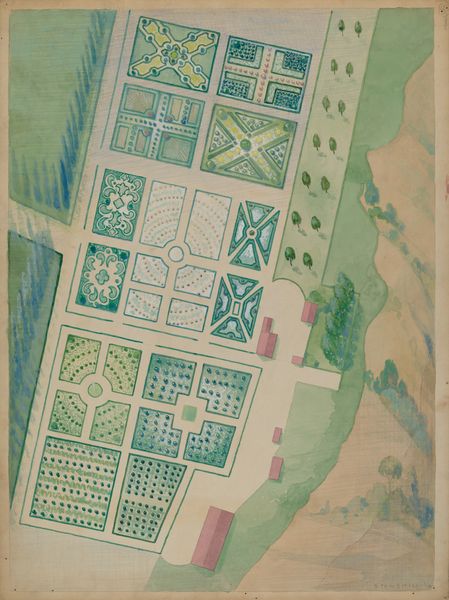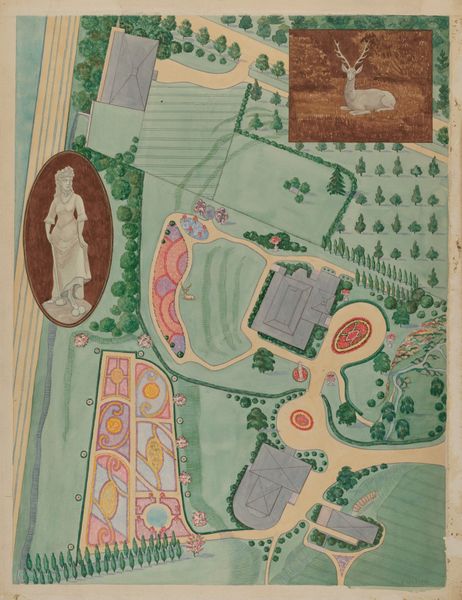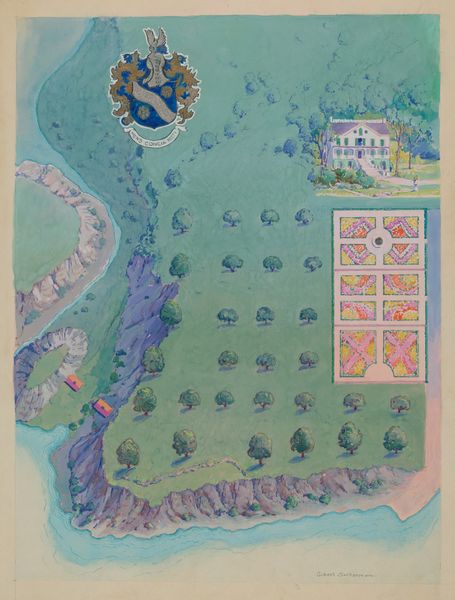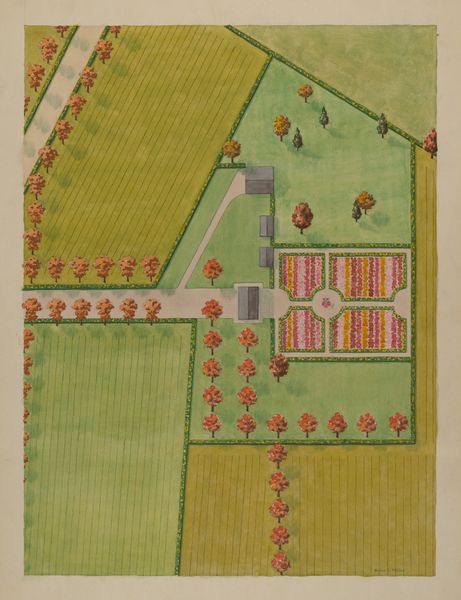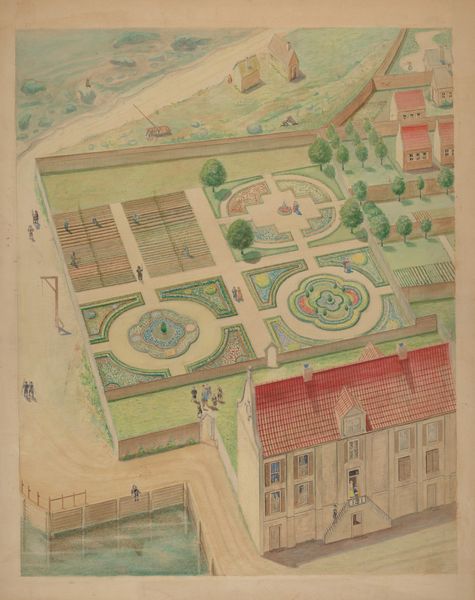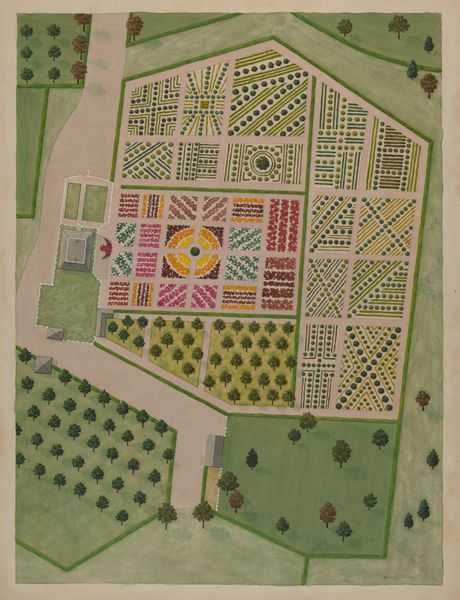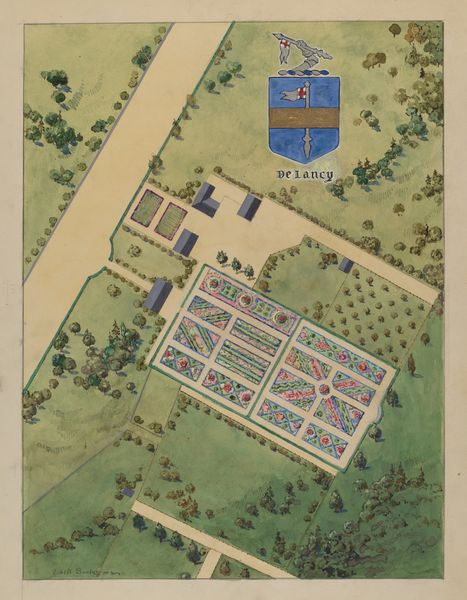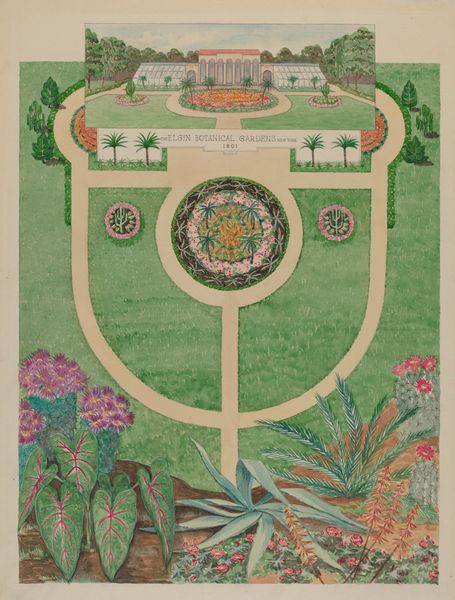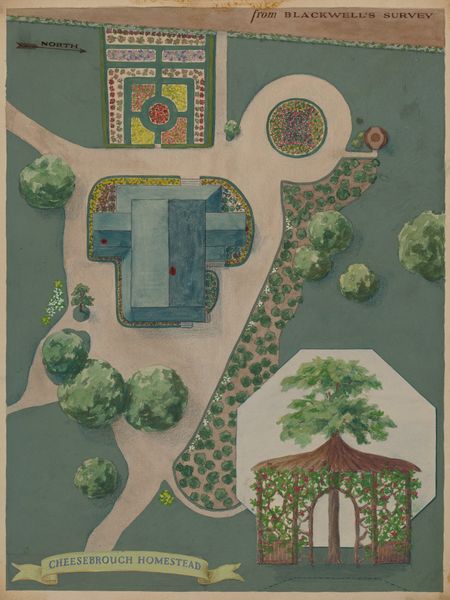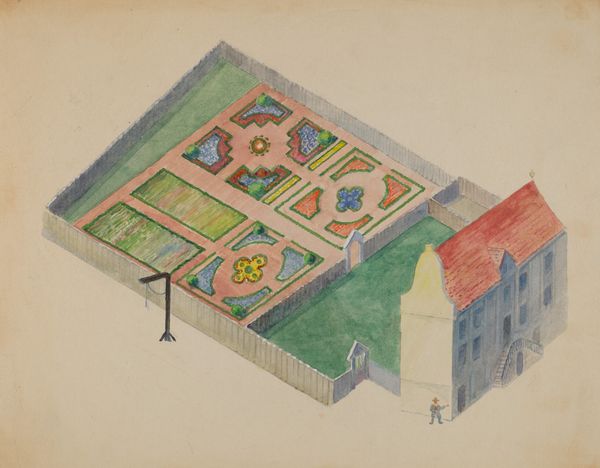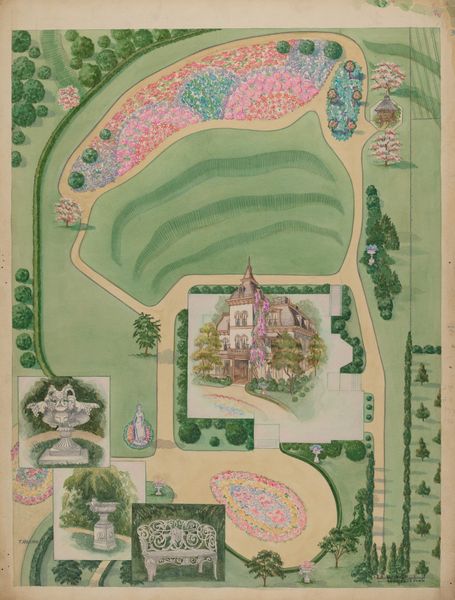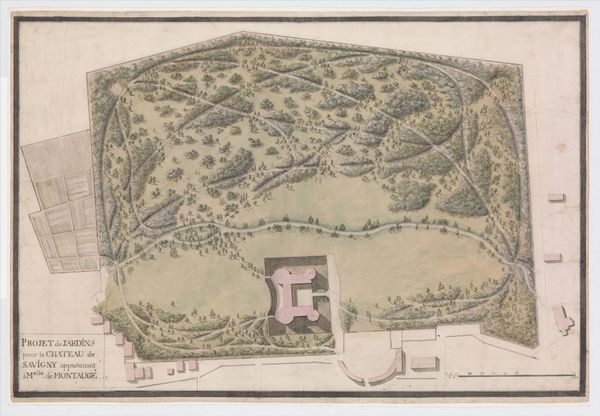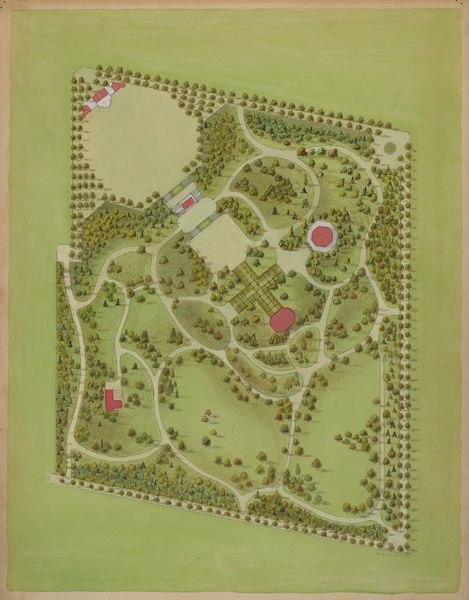
drawing, plein-air, watercolor
#
drawing
#
water colours
#
ink painting
#
plein-air
#
landscape
#
watercolor
#
coloured pencil
#
naive art
#
cityscape
Dimensions: overall: 51 x 38.3 cm (20 1/16 x 15 1/16 in.)
Copyright: National Gallery of Art: CC0 1.0
Curator: Well, the first thing that strikes me is just how orderly it all is—a perfect pastoral fantasy rendered in, I think, watercolor, ink and colored pencil. It’s got this sweet, almost naive quality… Editor: Naive, yes, but also strategic. This is a design, a layout, almost an infographic. The artist, Gilbert Sackerman, likely created "A. Elliot Estate," around 1936, as a commission. Look at the emphasis on land management. Curator: Commission or not, there's something inherently charming about this almost bird's-eye perspective of a country estate, right? The almost geometric precision of the rose gardens contrasting with the rolling hill in the background—it feels very dreamlike. Almost utopian. Editor: Dreamlike, perhaps, but consider the labor required to manifest such a dream. All the carefully planned plots... somebody's going to be out there with their hands in the dirt, doing hard work, keeping up the appearance. We see a lovely rendering, but the material reality behind it… Curator: But isn't there something intrinsically beautiful about that labor? All that nurturing, all that intention... it echoes in the artwork, you know? Like the layers of pigment subtly build up to show life being breathed into something. I wonder, was Sackerman perhaps imagining himself within this very garden as he composed the work, allowing it to be what he thought beauty would or should look like. Editor: I understand the romantic sentiment. However, I focus on the “how." I mean, was the watercolor handmade? Where were these pencils sourced? How were those workers on the farm treated? These are crucial pieces often glazed over. What kind of labor conditions facilitated such precise application, to such meticulous design. That's the story. Curator: Maybe you’re right, but maybe there is space for more than one story—the visible beauty and the invisible conditions that birth the work. All those unasked and often unanswered questions only make me admire the artist's delicate hand all the more! Editor: That tension, the seen and the unseen, is perhaps the artwork's most valuable commodity.
Comments
No comments
Be the first to comment and join the conversation on the ultimate creative platform.
